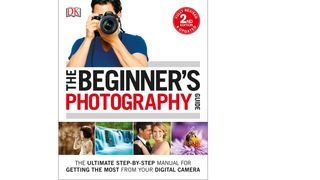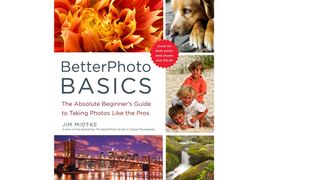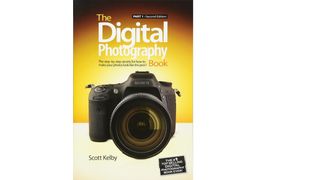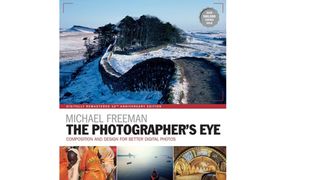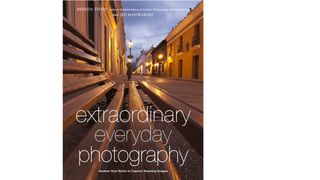The best photography books for beginners and pros in 2019
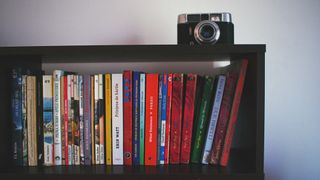
The best photography books will help you improve your skills, give you a fresh perspective on how to approach a shoot, and provide a burst of inspiration and ideas for new projects.
THE BEST PHOTOGRAPHY BOOKS IN 2018
It doesn't matter whether you're an experienced pro or a total novice: there are always new things you can learn about taking pictures. So in this post, we've gathered together our favorite photography books on the web today.
From the best photography books for beginners through to advanced-level skills guides – and including beautiful coffee table photography books, insightful guides to the business of photography and more – you're sure to find a wealth of photography books here to boost your bookshelf.
The best photography books for beginners
1. The Beginner's Photography Guide
The best photography book for beginners
Easy to follow
Visually appealing design
Some explanations a little brief
Doesn't cover advanced topics
If you're new to digital photography, this step-by-step manual is a great place to start. It does a great job at explaining how the camera works, what the different settings do, and the techniques you need to master, from exposure to shutter speed to aperture. To stop you getting lost, there are handy checklists to make sure you're keeping up, and comparison images that show you how camera settings produce different results.
Also note that the latest version of this book was released in 2016, which means it's pretty up to date in terms of the tech (anything new that's appeared on cameras since then won't really be something beginners should be worried about).
2. Complete Digital Photography, 8th edition
The most comprehensive photography guide for beginners
Hugely detailed
No stone unturned
Level of detail may be overwhelming
More a reference book than a holiday read
Another great book for beginners, this guide to digital photography tells you everything you need to know to get started with your camera, and is particularly strong on explaining the inner workings of the technology in the words a non-techie can understand.
(That might not sound like something you need to know, but he does tie it into photography technique in a way that really helps you wrap your head around what you're doing.)
In this weighty book, last updated in 2014, photographer, writer and teacher Ben Long covers everything you need to know, from how to choose a camera to taking pictures and editing them. Plus there are some great step-by-step tutorials to help you get started and improve your process and workflow.
Ranging from the very basics to more advanced topics like exposure theory, composition, lighting and complex masking, this is more of a reference book than something you'll read from start to finish, but that in itself is no bad thing.
3. BetterPhoto Basics
The friendliest beginners' guide to photography
Fun and friendly approach
Easy to follow explanations
Quite basic
Only suitable for total newbies
If you're a photography novice looking for a relatively light and friendly read, this guide from Jim Miotke - the brains behind online photography school BetterPhoto.com - should be just up your street.
Explaining everything an absolute beginner needs to get started taking great photos, it's packed with tips and advice, and explanations are friendly sounding and written in plain English.
Once you've got to grips with the basics, Miotke walks you through taking 20 common categories of photos, including family and pet portraits, flowers, sunsets, candids, close-ups and monochrome shots.
Suitable for children and adults, this book sets out to make learning photography fun and rewarding, and ultimately whether it succeeds will be down to you.
4. Tony Northrup's DSLR Book: How to Create Stunning Digital Photography
The best book + video training for photography beginners
A go-to book for amateur photographers
Comes with videos
Possibly better for portrait photographers
Could talk more about wildlife ethics
When it comes to learning photography, reading from books and watching videos are two approaches that each have strengths and weaknesses. So why not combine the two for the best of both worlds?
That's exactly what this package from Tony Northrup, the founder of photo.net, offers. As well as this 233-page book, you get over three hours of supplementary online training videos, and free help from the author and other readers via an online readers group.
This is very much a practical, hands-on course that requires you to grab your camera and get shooting right away. There are exercises at the end of every chapter to give you the real world experience you need, and the emphasis is very much on learning by doing.
How to improve as a photographer
5. The Digital Photography Book: Part 1
The best photography book for insider tips
Jargon free
Insider knowledge
Tone sometimes questionable
Some tips quite basic
This book takes an approach to improving your photography that makes perfect sense to us. Here's how author Scott Kelby, co-host of Photoshop User TV, explains it...
“If you and I were out on a shoot, and you asked me, 'Hey, how do I get this flower to be in focus, with the background out of focus?,' I wouldn't stand there and give you a photography lecture," he says. "In real life, I’d just say, 'Put on your zoom lens, set your f-stop to f/2.8, focus on the flower, and fire away.'"
In exactly that spirit, this book offers more than 200 photographic tricks of the trade, to help you get looking, sharper, more colourful, more professional-looking photos, explained in the same way you would in a normal conversation. So you learn how using a different setting, tool or trick in a particular situation can truly transform the quality of your work, and make it look more like the work of a pro than an amateur.
Kelby really does write like you're standing next to you, and while that might sometimes be off-putting (depending on whether you 'get' his sense of humour), there's no denying that these tricks really work, whether you're a beginner or an experienced photographer.
6. The Headshot: The Secrets to Creating Amazing Headshot Portraits
The best photography book on taking headshots
Insider secrets
Invaluable tips
Not a comprehensive reference
Focused on one man's approach
In the modern social media age, having a decent looking head-and-shoulders portrait is something that concerns everyone, not just actors and models. So if you want to know how to take professional looking headshots, this book by professional portraitist Peter Hurley is just what you need.
You'll learn the same techniques the author had used to take amazing headshots of Fortune 500 CEOs, actors and public figures, from lighting your subjects correctly to putting them in flattering positions.
Hurley also shares his trade secrets for getting genuine smiles and authentic expressions rather than people's standard 'photo face' that always makes a headshot look dull and lifeless.
Note that this is not so much a step-by-step training manual or reference guide as an insight into how one man approaches his art. But when it's someone at the top of his game like this, there's a huge amount any photographer can learn here.
7. The Art of Photography 2nd edition: A Personal Approach to Artistic Expression
The best book on the philosophy of photography
True classic
Potential game changer
Low on technical advice
Unsuited to beginners
First published in 1994, this book is considered a classic of photography instruction. It was fully updated in 2010 to incorporate digital photography. But actually, it's not so much a technical guide as a deep dive into the philosophical and creative side to photography.
The author's main aim is to dissuade photographers from the approach of taking hundreds of shots in the hope of getting one good image, and instead understand the processes by which you can shoot fewer, but better pictures overall.
In other words, if you're at the stage of your photography journey where you understand all the tools and techniques, but you're still taking unimpressive pictures, this is the book for you.
8. Studio Anywhere: A Photographer's Guide to Shooting in Unconventional Locations
The best photography book for thinking outside the box
Insider knowledge
Real-world honesty
Niche appeal
Reliance on post-processing
There's something magical about the idea of a photo studio, a place where you can ensure the right lighting, space and ambience to capture the perfect shot.
But in the real world, photography takes place in much more challenging locations, and that's where this book comes in.
Whether you're shooting a corporate portrait of a CEO, a test shoot with a model, or a promo shoot with a band, professional portraitist Nick Fancher explains how to get great looking shots in less than ideal scenarios.
He takes you behind the scenes of his own photo shoots and explains how getting creative, from changing the lighting to post-processing, allows you to develop your own vision and achieve professional looking shots in the potentially worst places.
If you do a lot of portrait photography and want some tips on thinking outside the box, you won't find better.
9. The Photographer's Eye Remastered 10th Anniversary: Composition and Design for Better Digital Photographs
The best photography book on composition
Well-written and organised
Good visual design
Not much technical advice
Narrow subject area
There's no point in understanding the technical side of photography if you don't understand composition. This classic book, updated to celebrate its 10th anniversary in 2017, explains the principles of good composition, and how to put them into practice.
It's divided up into bite-size chapters to make everything easy to follow. And usefully the images (which are mainly from the author's travel photography) are shown with multiple crops, thus demonstrating how one particular composition of a picture works better than another.
Following the author's reasoned and well-explained advice will help you develop your compositions and take better pictures as a result. In short, if you struggle with composition as a photographer, then you need this book.
10. Extraordinary Everyday Photography
The best photography book on seeing the world differently
Inspirational read
Full of tips and exercises
Focus on creativity not technique
Not suitable for pros
Great photography lies not so much in technical expertise but in learning to see things in a different way to the norm. The starting point for this book is that you don't have to travel to far-flung locations to take arresting pictures; great images are possible any where. You just have to scratch the surface and find them.
Authors Brenda Tharp and Jed Manwaring encourage you to slow down, open your eyes and respond to what you see through advice, discussions and exercises. Throughout this book, you'll learn to use composition, available light, colour, and different point of views to raise the quality and interest level of your shots.
Aimed at amateur photographers who have technical knowledge but are lacking purpose and vision, this insightful read will help you rediscover your photographic soul and give you new ideas and enthusiasm.
